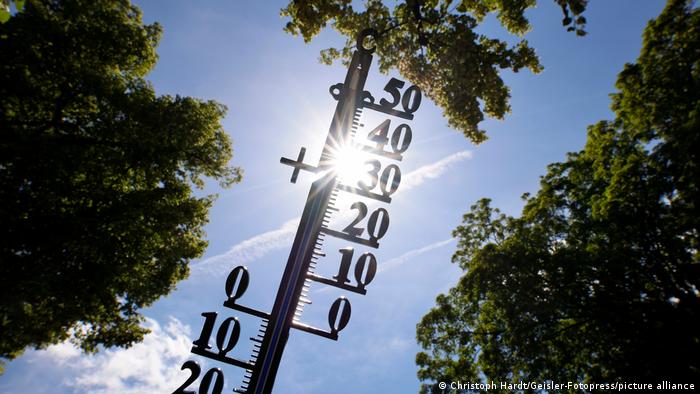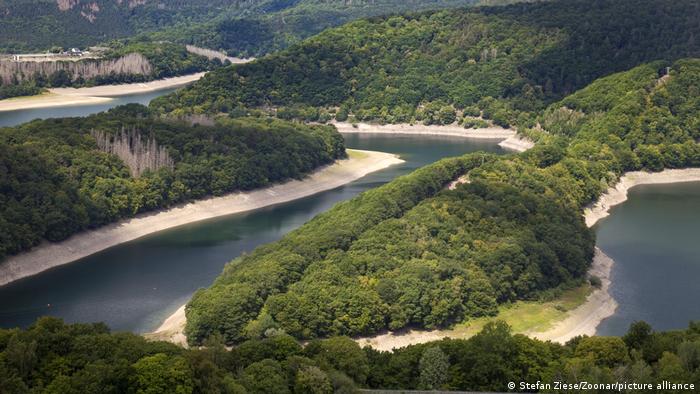[ad_1]
Europe and Germany are increasingly endangered by water scarcity. Especially the groundwater level is falling alarmingly. Adequate measures and a reorientation are needed to fight the problem.
Two-thirds of the blue planet is covered by water, but less than three percent of the water is drinkable. In addition it is very unevenly distributed. Especially in many areas of Africa, the Middle East, Latin America and Asia there is a dramatic shortage of water.
Europe is also increasingly feeling the shortage of water. In many European countries there has been very little rain in recent years, temperatures have risen sharply and summers are getting hotter and hotter.
As a result, water shortages and droughts are threatening large parts of Europe. According to Copernicus Climate Change Service the dry season will continue to spread from Eastern Europe across the continent, not once in the distant future, but now.
Scary water loss in Germany too
Germany, which is traditionally rich in water, is drying up more and more. This is shown by current data from Grace satellites, which Jay Famiglietti, Director of the Global Institute for Water Security at the University of Saskatoon, Canada, has reviewed at the behest of NASA and the German Aerospace Center.
“Water loss in Germany is about 2.5 gigatonnes or cubic kilometers per year. “This makes it one of the regions with the highest water losses in the world,” says Famiglietti.
Since water in the German consciousness has always been sufficient, the Famiglietti illustrates the great loss of water with the largest German lake (bordered by Austria and Switzerland): “Put simply: for 20 years Germany has lost water in the amount of Lake Constance. “It’s extremely watery.”
Rainy days alone are not enough
The drastic reduction of water in Germany is not only reflected in the falling levels of streams and rivers. It is also distinguished by the reduction of soil moisture, which is especially important for agriculture and forests. Of course, soil moisture varies greatly depending on whether it has rained constantly or has been a long period of drought.
“But whoever thinks that a few days of heavy rain will fix the situation, is wrong: Even if it rains heavily for a long time, less and less water reaches the groundwater reservoirs.”
Because it takes many months for rainwater to enter from the surface of the earth through various layers of soil and rocks, and for groundwater vessels to be refilled after a long period of drought.
The gravity of the earth gives the explanation
The condition of groundwater reservoirs is measured by GRACE-FO (Gravity Recovery and Climate Experiment Follow On) satellites, which measure earth gravity fluctuations for 20 years, varying with different water content.
While mountains and seabeds vary little, the displacement of large amounts of water through evaporation, precipitation, or runoff into the sea provides useful data that researchers can then compare with the results of previous measurements by the GRACE mission. and with ground station data.
“Evaluating the data shows the negative trend,” said Jay Famiglietti of the Global Institute for Water Security.
It is not just climate change that is responsible for increasing water scarcity. Of course rising temperatures cause increased evaporation. Even the careless use of water in many places will add to its scarcity.
Because although water is becoming less and less, consumption for years is increasing. On the one hand in private families and above all in industry and intensive agriculture. Especially in the very dry summers of recent years agriculture has been irrigated more and more frequently, as the plants in the fields were drying up. In some regions this has caused considerable difficulties with water supply.
Necessary measures
We can counter water scarcity, for example, through more economical crops, more conscious consumption or effective water management.
There are many ideas and solutions. For example, land does not have to be “sealed” everywhere, as is the case in many cities: water must be able to penetrate in order for the groundwater level to be recovered.
Agriculture can irrigate more selectively and pollute water less with fertilizers. Streams and rivers, which are directed, can be naturalized again, so that the water does not drain too quickly, but can gradually penetrate down. Sewage or salt water can be treated in usable water.
For all these options in the fight against water scarcity experts will discuss from 21-26 March 2022 at the 9th World Water Forum. It takes place in Dakar, the capital of Senegal, and so for the first time in West Africa. In an area where people have long felt the dramatic consequences of water scarcity.DW
top channel
[ad_2]
Source link

















